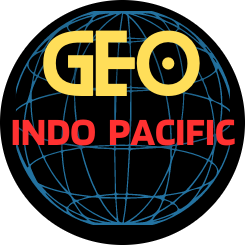
China’s expanding influence in foreign ports, critical infrastructure and even labor union dynamics presents a complex and evolving challenge to national security and logistics throughout the Indo-Pacific. Far from being purely economic ventures, these calculated actions increasingly create strategic outposts for China, resulting in erosion of host nation sovereignty.
Nations throughout the region must consider the risks of dual-use capabilities, intelligence gathering, and potential disruptions to global supply chains and military readiness when contemplating investments from entities tied to China.
At the heart of China’s maritime strategy lies its extensive investment in foreign ports, often under the umbrella of the Chinese Communist Party’s (CCP) One Belt, One Road infrastructure scheme. China’s state-owned enterprises (SOE), such as the China Ocean Shipping Co. and the China Merchants Port Holdings Group Ltd., have acquired equity stakes or operational leases in terminals across the globe. In the Indo-Pacific, China holds interests in dozens of ports through its SOEs. Many are strategically located along vital sea lines of communication and near critical maritime choke points such as the Malacca Strait.
Concerns surrounding these port holdings and controlling interests are multifaceted with significant dual-use implications. While outwardly commercial, many of these port holdings possess the characteristics and infrastructure necessary to support military operations. Deep-water berths, large storage facilities and advanced logistics capabilities are assets the CCP needs for resupply, maintenance or de facto naval bases for global force projection.
As a stark example of the CCP rapidly converting ostensibly civilian infrastructure for military purposes, Beijing’s investment in Djibouti’s port quickly led to the facility becoming home to China’s first overseas military logistics outpost in 2017. Djibouti, a nation of 1 million people on the northeastern Horn of Africa, has access to the Red Sea and the Gulf of Aden, critical shipping routes for global trade.
Beijing’s foreign port holdings also support China’s intelligence gathering. Port operations rely on sophisticated software and sensor networks to track cargo, vessels and logistics data. Chinese SOEs such as Shanghai Zhenhua Heavy Industries Co. Ltd. control 70% of the global market for cranes, which are equipped with sensors to track shipping containers. Similarly, many international ports use China’s National Public Information Platform for Transportation and Logistics (LOGINK) to aggregate data. LOGINK provides real-time visibility into global supply chains, including sensitive information about national commercial and potentially military shipments. That gives Beijing access to vital information to identify vulnerabilities, predict economic trends or disrupt logistics during a conflict.
Beijing’s control over key port infrastructure enables it to wield significant economic and political power. By dominating maritime trade volume, shipbuilding and port ownership, China influences international maritime regulations, shipping fees and port access rules. It leverages this economic power to pressure nations into aligning with its policies or risk trade disruptions.
Meanwhile, the exploitative terms and conditions of China’s infrastructure loans are the cornerstone of Beijing’s predatory lending practices, which seek to leverage economic dependency for strategic gain.
Beijing’s infrastructure development across the Indo-Pacific, including roads, railways and communication networks, further entangles recipient nations. While such projects can bring needed development, they often come with a reliance on Chinese financing, contractors and materials, restricting opportunities for local businesses and potentially leading to unsustainable debt. This translates into political influence for Beijing, potentially undermining the sovereignty of host nations and limiting their willingness to cooperate with like-minded partners in times of tension.
The influence of China’s SOEs extends to labor unions operating at foreign ports and other infrastructure. The CCP wields the ability to create labor disputes or slowdowns at critical ports, potentially delaying the movement of essential supplies.
Collaboration as a Solution
Indo-Pacific Allies and Partners should take a multipronged approach to addressing China’s growing maritime influence, including:
- Strengthening partnerships to offer alternative, transparent and sustainable infrastructure development models. This involves promoting high-quality, resilient projects that benefit host countries without creating unsustainable debt.
- Investing in maritime capabilities to revitalize domestic shipbuilding and control of port infrastructure. This reduces reliance on foreign-flagged vessels and limits potential vulnerabilities.
- Enhancing resilience by diversifying supply chains, identifying alternative transportation routes and developing robust contingency plans to mitigate potential disruptions as a result of geopolitical tensions or adversarial actions.
- Monitoring and countering China’s attempts to exert malign influence over foreign ports, infrastructure and labor dynamics through transparent engagement and intelligence sharing with partners.
- Addressing security risks posed by Chinese SOEs’ port equipment and software, exploring alternatives and promoting secure digital infrastructure in global logistics.
China’s investments in foreign ports and infrastructure are not merely economic endeavors; they are integral to Beijing’s geopolitical ambitions in the Indo-Pacific. Developing a comprehensive and collaborative strategy to mitigate such challenges is crucial to safeguarding national security and ensuring the free flow of commerce and military logistics in this vital region.
Upholding sovereignty demands strategic foresight, robust investment and commitment from Allies and Partners to maintain a stable and secure maritime order.





